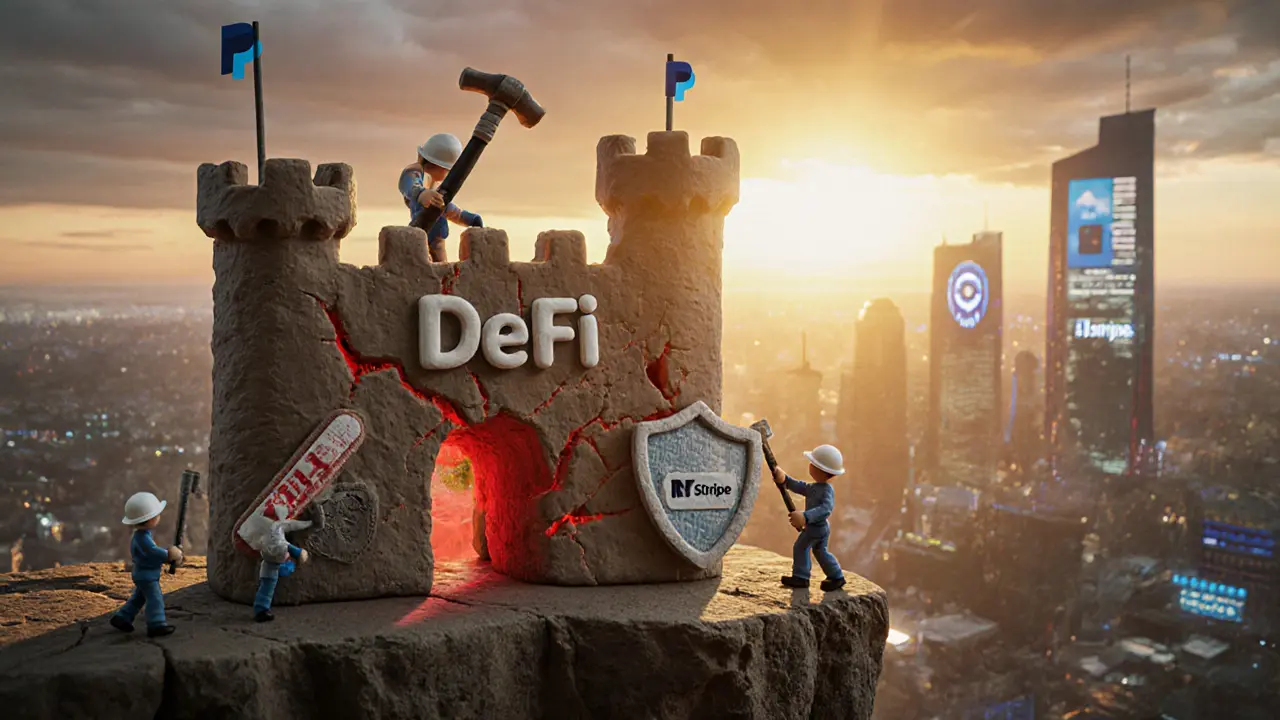DeFi Growth Statistics and Adoption: Market Trends, TVL, and Regional Adoption in 2025
 Apr, 24 2025
Apr, 24 2025
DeFi TVL Growth Calculator
Calculate how your investment could grow based on DeFi's historical growth rates. The Total Value Locked (TVL) in DeFi reached $123.6 billion in 2025 and is projected to reach $1.5 trillion by 2034.
Recommended growth rates based on article data:
41% (2024-2025)
17% (2025-2034)
10% (Conservative)
Projected Value
DeFi isn’t just another buzzword in crypto. It’s reshaping how money moves-without banks, without brokers, without middlemen. By 2025, over $123.6 billion is locked in decentralized finance protocols. That’s not a typo. It’s real money, controlled by code, not corporations. And it’s growing fast.
How Big Is the DeFi Market Really?
There’s no single answer. Different research firms see different numbers. CoinLaw says the DeFi market hit $30.07 billion in 2024. Grand View Research says $20.48 billion. NextMSC puts it at $29.05 billion. Precedence Research, the most bullish, says $32.36 billion. And Statista? They think it’s barely over $10 billion. Why the gap? It comes down to what’s being counted. Some reports include only lending and trading platforms. Others add stablecoins, synthetic assets, insurance, and even cross-chain bridges. One thing’s clear: everyone agrees the market is exploding. Projections for 2030 range from $231 billion to nearly $400 billion. Precedence Research predicts a staggering $1.5 trillion by 2034. That’s 50 times what it is today. The disagreement isn’t noise-it’s a signal. DeFi is still too new for standard measurement. But the direction? Undeniable.Total Value Locked (TVL): The Real Pulse of DeFi
TVL isn’t a marketing metric. It’s the heartbeat of DeFi. It measures how much real value users have deposited into protocols-lending, staking, providing liquidity. In 2025, TVL hit $123.6 billion. That’s up 41% from the year before. What’s driving that? Stablecoins. Over $146 billion in stablecoins are circulating inside DeFi apps right now. USDC is everywhere-it’s used in 92% of the top lending and exchange platforms. DAI, the decentralized stablecoin, has $8.4 billion in supply, and over 70% of it is actively used in DeFi strategies. Tether (USDT) is bigger overall, but only 58% of its supply is actually in DeFi. The rest sits on exchanges or in wallets. New players are rising fast. Ethena’s USDe hit $1.9 billion in DeFi integration in just six months. sUSD and LUSD, both built for DeFi-only use, together hold $2.7 billion. These aren’t just tokens-they’re the fuel powering yield farms, lending pools, and automated trading bots.Stablecoins and Synthetic Assets: The Hidden Engine
DeFi doesn’t just move crypto. It’s starting to move the real world. Synthetic assets-digital tokens that mirror gold, stocks, or real estate-are now worth $3.2 billion in DeFi. That’s not theoretical. People are using them to trade exposure to Apple stock or London apartments without ever touching a brokerage account. Cross-chain bridges, which let stablecoins move between Ethereum, BNB Chain, and Solana, processed over $12.6 billion in the first half of 2025. That’s not just convenience. It’s infrastructure. It means users aren’t stuck on one network. They can chase the best yields, no matter where they live or what chain they started on. This is where DeFi stops being a crypto experiment and starts becoming a financial system.
Who’s Adopting DeFi-and Where?
North America leads in market size. The U.S. alone had a $5.84 billion DeFi market in 2024. Why? Strong tech infrastructure, venture capital backing, and a culture of early crypto adoption. But it’s not the fastest-growing region. That’s Asia Pacific. Countries like India, Indonesia, and the Philippines are seeing explosive growth. Why? Mobile-first populations. Millions of people with smartphones but no bank accounts. DeFi apps work on cheap phones. They don’t need a credit score. They just need internet. In Europe, institutional interest is rising. Regulators are starting to lay down rules-not to shut DeFi down, but to bring it in. The EU’s MiCA framework is already shaping how DeFi platforms operate. In the U.S., clearer rules from the SEC could unlock billions in institutional capital. The numbers tell a story: North America owns the market today. Asia Pacific will own the growth tomorrow.What’s Actually Driving DeFi Forward?
It’s not speculation. It’s utility. First, financial inclusion. Around 1.4 billion adults worldwide have no bank account. DeFi doesn’t care where you live or what your income is. If you have a wallet, you can lend, borrow, or earn interest. That’s powerful. Second, cost. Traditional loans take days. DeFi loans take minutes. No paperwork. No credit checks. Just collateral and code. Third, innovation. Layer-2 solutions like Arbitrum and Optimism slashed transaction fees by over 90%. That made DeFi usable for small transactions-not just million-dollar trades. AI-powered robo-advisors now auto-manage yield strategies, earning users passive income without them lifting a finger. And then there’s tokenized real-world assets. Real estate, commodities, even invoices are being turned into tokens. That’s not sci-fi. It’s happening. Mordor Intelligence estimates this trend adds 1.2% to DeFi’s annual growth rate. That’s billions in new capital.
Kristi Malicsi
November 27, 2025 AT 23:19DeFi isn't about money it's about freedom
no bank can freeze your wallet
no government can devalue your savings
you own the code and the code owns nothing but truth
that's the real revolution
not the numbers
not the TVL
just the fact that a kid in Manila can lend to someone in Lagos without asking for ID
that's power
and nobody's ready for it